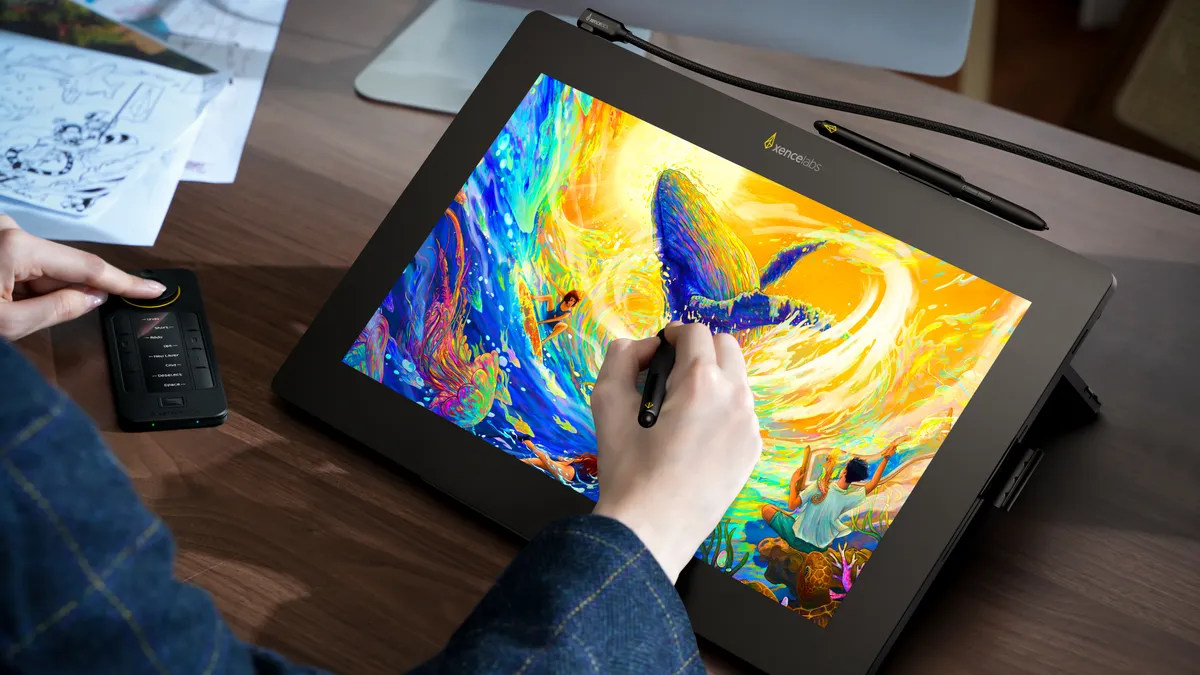
Introduction to OLED Technology
OLED technology represents a significant advancement in display technology. Unlike LCDs, which rely on backlighting, OLEDs generate their own light. Each pixel consists of three sub-pixels (red, green, and blue) that can be controlled independently to produce a wide range of colors and brightness levels.
Key Benefits of OLED Technology
- Higher Contrast Ratio: OLEDs achieve an infinite contrast ratio by turning off individual pixels to produce true blacks, resulting in superior contrast compared to LCDs.
- Wider Viewing Angles: These displays offer wider viewing angles without significant drops in color accuracy or brightness, making them versatile for various environments.
- Faster Response Time: OLEDs have a faster response time, reducing motion blur and enhancing display responsiveness.
- Power Efficiency: By controlling each pixel individually, OLEDs consume less power, as only necessary pixels are lit.
- Color Accuracy: Known for excellent color accuracy and a wide color gamut, OLEDs are ideal for high-quality visuals in gaming, video streaming, and graphic design.
Applications in Android Tablets
Android tablets have embraced OLED technology due to its numerous benefits.
Enhanced Visual Experience
High contrast ratios and wide color gamuts provide an enhanced visual experience. Vibrant colors and deep blacks create a more immersive experience for activities like watching movies, playing games, or browsing photos.
Power Efficiency
OLED technology's power efficiency is particularly beneficial for portable devices. Only necessary pixels are turned on, reducing overall power consumption.
Durability
Without a backlight that can be damaged, OLED displays are generally more durable than LCDs. This makes them a better choice for devices prone to rough handling.
Customization
OLED technology allows for more customization options. Features like auto-brightness adjustment and color temperature control can be tailored to user preferences.
Comparison with Other Display Technologies
While OLED technology offers numerous advantages, it also faces competition from other display technologies.
LCDs
LCDs are the most common type of display technology in handheld devices. They use a backlight to illuminate liquid crystals, which can result in lower contrast ratios and less vibrant colors compared to OLEDs.
- Contrast Ratio: LCDs typically have lower contrast ratios due to the backlight, leading to washed-out blacks and reduced image quality.
- Power Consumption: Although improved, LCDs generally consume more power than OLEDs because the backlight is always on.
- Viewing Angles: LCDs often suffer from decreased brightness and color accuracy when viewed from the side, unlike OLEDs.
AMOLED
AMOLED (Active Matrix Organic Light-Emitting Diode) is a variant of OLED technology using an active matrix to control each pixel. While sharing many benefits with OLEDs, AMOLEDs have some differences:
- Power Efficiency: Generally more power-efficient than LCDs, AMOLEDs may consume slightly more power than standard OLEDs due to the active matrix.
- Durability: AMOLEDs can be more prone to burn-in if static images are displayed for extended periods, although this is less common in modern devices.
- Cost: Often more expensive to produce than standard OLEDs, affecting device pricing.
Mini-LED
Mini-LED technology uses an array of small LEDs to illuminate liquid crystals, offering improved contrast ratios and local dimming capabilities.
- Contrast Ratio: Mini-LEDs achieve higher contrast ratios than LCDs by using local dimming but still fall short of OLEDs.
- Power Consumption: Generally consume more power than OLEDs due to multiple LEDs required for high contrast ratios.
- Cost: Typically more expensive than LCDs but less expensive than OLEDs.
Case Studies: Popular Android Tablets Utilizing OLED Technology
Several popular Android tablets have adopted OLED technology to enhance user experience.
Google Pixel Tablet
The Google Pixel Tablet features a high-resolution OLED display with excellent color accuracy and a wide color gamut. Its power efficiency makes it suitable for both indoor and outdoor use.
Samsung Galaxy Tab Series
Samsung’s Galaxy Tab series is known for high-quality displays. Many models feature AMOLED technology, providing vibrant colors and deep blacks, popular among users valuing a premium visual experience.
Lenovo Tab Series
Lenovo’s Tab series offers several models with OLED displays. Known for sleek designs and robust performance, these tablets are ideal for both casual users and professionals.
Final Thoughts
OLED technology has transformed the display landscape for handheld devices, particularly Android tablets. High contrast ratios, wide viewing angles, and fast response times make it an ideal choice for devices requiring high-quality visuals. While other display technologies like LCDs, AMOLEDs, and mini-LEDs have their own advantages, OLED technology stands out due to its power efficiency and durability.
As technology continues to evolve, expect even more advanced features from OLED displays in future devices. For now, Android tablets utilizing OLED technology offer an unparalleled visual experience that sets them apart from competitors.
